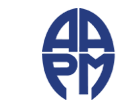| Question 1: A scanner meeting NEMA XR-29 compliance satisfies the Joint Commission requirement for: |
| Reference: | https://www.jointcommission.org/diagnostic_imaging_standards/ |
| Choice A: | Comparing your dose incidents to external benchmarks since dosecheck values represent external benchmarked values (PI.02.01.01 A6). |
| Choice B: | Annual protocol review components by the CT technologists since the technologists interact with this doscheck feature on the scanner (PC.01.03.01 A26). |
| Choice C: | Knowing your expected dose ranges since the dosecheck feature is set-up at the high end of your expected dose range (PC.01.03.01 A25). |
| Choice D: | None of the above. |
| Question 2: CT Protocols you find on the internet should be reviewed carefully; differences between scanner make and model may impact the following with the exception of: |
| Reference: | McKenney S, Siebert J, Lamba R, Boone J. Methods for CT automatic exposure control protocol translation between scanner platforms. J Am Coll Radiol. 2014;11(3):285–91.
Szczykutowicz, Timothy P., et al. "CT protocol management: simplifying the process by using a master protocol concept." Journal of Applied Clinical Medical Physics 16.4 (2015).
To understand how the number of phases and a specific scanner are not related, see “MDCT from protocols to practice” by Kalra, Saini, and Rubin Springer 2006
|
| Choice A: | Scan times due to differences in beam collimation, rotation time, and pitch. |
| Choice B: | Scan times due to maximum tube power ratings (i.e. higher tube power scanners can be made to scan faster). |
| Choice C: | Dose since gantry size adjustments allowing for 1/r^2 corrections in scanner output must be made in some cases. |
| Choice D: | The number of phases for a given indication (in a time resolved dynamic contrast study. |
| Question 3: Joint Commission Standard EC.02.04.03 EP 19 requires the CTDIvol be measured for a total of _____ protocols. |
| Reference: | The Joint Commission Prepublication Requirements issued January 9, 2015 page 2. |
| Choice A: | 2. |
| Choice B: | 3. |
| Choice C: | 4. |
| Choice D: | Not specified. |
| Question 4: Joint Commission Standard PC.01.03.01 EP 26 requires that diagnostic CT imaging protocols be reviewed annually. |
| Reference: | The Joint Commission Prepublication Requirements issued January 9, 2015, page 6. |
| Choice A: | True. |
| Choice B: | False. |
| Question 5: The most frequently scored Diagnostic Imaging Services Joint Commission standard during the period 7/1/15-3/1/17 was ____________. |
| Reference: | See bar graph of RFI Summary in presentation. |
| Choice A: | PI.02.01.01: review and analysis of excessive dose index. |
| Choice B: | EC.02.04.03: Measurement of the CTDI. |
| Choice C: | PC.01.03.01: Establish/adopt/review diagnostic CT protocols. |
| Choice D: | PC.01.02.15: document the dose index on every diagnostic CT exam. |
| Question 6: Which of the following factors is not considered a cause of protocol creep? |
| Reference: | PB Sachs, K Hunt, F Mansoubi and J. Borgstede. CT and MR Protocol Standardization Across a Large Health System: Providing a Consistent Radiologist, Patient, and Referring Provider Experience. J Digit Imaging 30: 11-16 (1017) |
| Choice A: | Individual Radiologists' preferences. |
| Choice B: | Protocol changes on-the-fly. |
| Choice C: | CT fleet including scanners from multiple vendors. |
| Choice D: | Lack of organized governance structure. |
